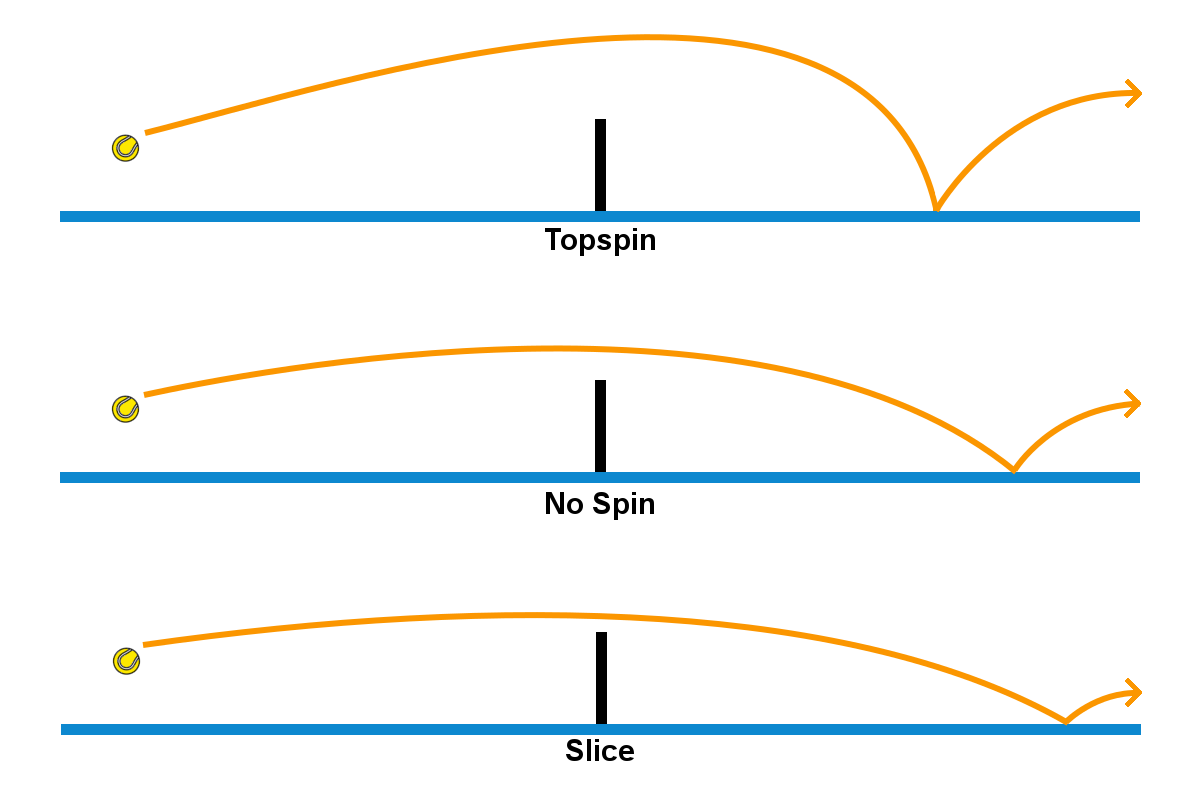How to Hit the Backhand Slice in Tennis
The backhand slice is a versatile stroke in the game. You can play it in the offensive as well as in the defensive. A good example is Roger Federer. He masters the slice like no other and regularly drives his opponents to despair.
This shot is the exact opposite of the topspin version. In this case, the ball receives a backspin instead of a forward rotation.
In general, the backhand slice is a frequently underestimated shot, which is why you can often surprise your opponent. Now learn the backhand slice and gain many strategic advantages over your opponent.
What Makes the Backhand Slice so Special?
The main feature of the backhand slice is the extremely flat and long flight path. This is caused by the backward rotation of the tennis ball.

According to the Magnus Effect, the spin gives the ball a lift in the air. More precisely, although the ball does not rise in height, it remains in the air much longer and therefore gets farther than a ball without spin.
This characteristic of the slice makes it more difficult for your opponent to hit the ball over the net. Because the ball bounces quite low, he literally has to “dig the ball out of the court”.
Another advantage of the slice is that it is a very energy-saving shot. Overall, the energy required for the swing movement is kept within limits.
How to Hit a Backhand Slice
Basically the backhand slice has some parallels to the one-handed topspin backhand. It doesn’t matter if you are one-handed or two-handed, for the slice you always use one hand only.
We consider the next steps from the perspective of a right-hander. Left-handers only have to mirror these steps.
Preparation
The similarities between the slice and the topspin backhand are the grip and the body position towards the ball. For the slice you use the “Continental grip”. In this case you turn the face of your racket perpendicular to the ground and then grab the handle with your right hand from above.
Before hitting the ball, you should take a lateral position to the net. This means that your right shoulder is facing the opponent. Also, keep your legs in a closed stance. This gives you maximum control for the backswing.
Backswing
Unlike the topspin backhand, the backhand slice is done by extending the racket well over your left shoulder. During the whole backswing, your right arm and your tennis racket are arranged at right angles, forming a so-called “L-shape”.
At the same time you bend your knees a little and transfer your body weight to the front foot. This prevents you from leaning back and losing your balance.
Follow Through
As already briefly mentioned above, the backspin is the main feature of the backhand slice. You create this rotation by “cutting” the ball at the bottom with the strings of the racket.
The ideal contact point on the side of your shoulder. For this reason, you accelerate the racket a little later than with a topspin backhand.
When the time is right, you follow through in a downward movement so that you undercut the ball. Make sure that the racket face is only slightly tilted upwards when you touch the ball. Otherwise the shot will not get the right length.
It is also important that your wrist remains stable during the entire movement and does not snap. In general, this would lead to a loss of ontrol.
Compared to other strokes, the swing is considerably shorter when slicing. You should only swing your racket downwards, simply extending your right arm to the ground.
Also consider that you don’t make a swinging turn with your upper body, but slowly position it to the net after the shot.
When Do I use the Backhand Slice?
In most rallies it is used as a means of defence.
If, for example, you are not in a good position or can hardly reach the ball, the slice is a good option. By keeping the ball in the air longer, you have more time to prepare for the next shot
Or you can use the slice in an intense baseline duel to reduce the speed of the rally. With this slow ball, you try to break the rhythm of your opponent.
You can also use the backhand slice as an approach shot, which you hit into your opponent’s “no man’s land”. This shot gives you enough time to move forward to the net.